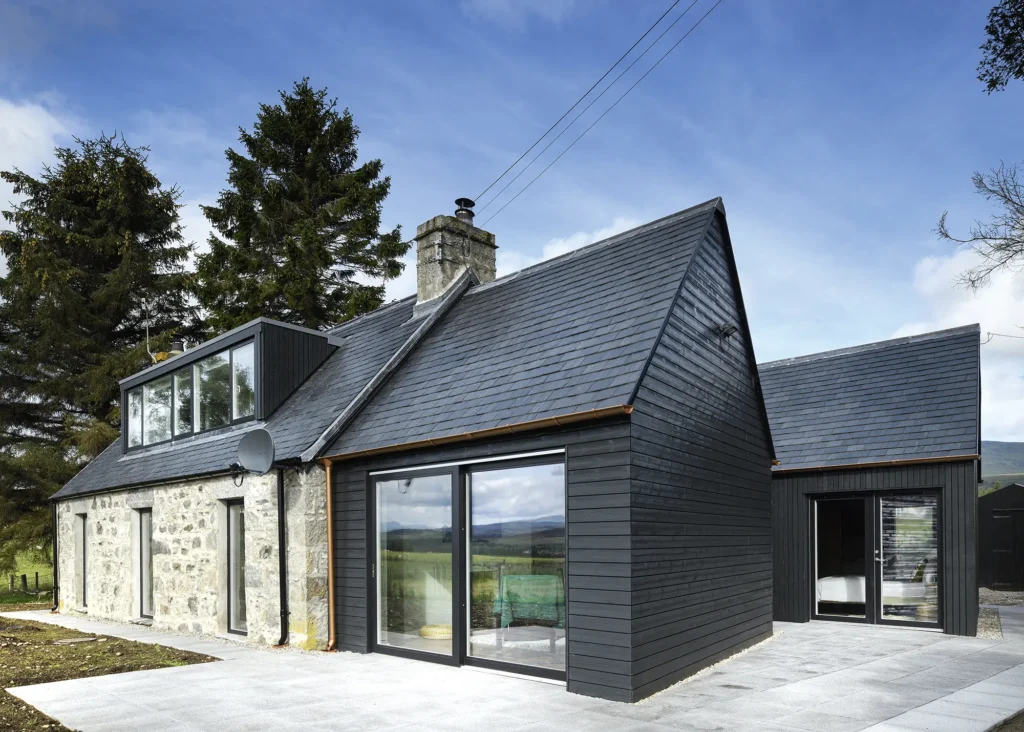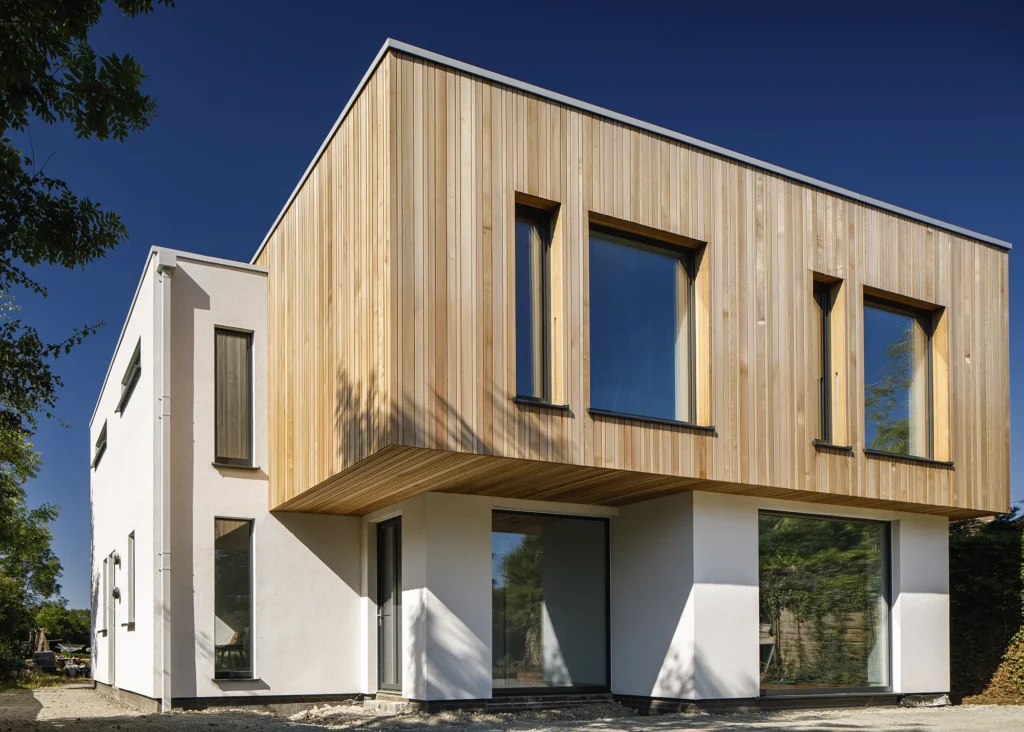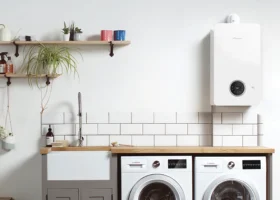
Early Bird Offer! Free tickets to meet independent experts at this summer's Build It Live
Save £24 - Book Now!
Early Bird Offer! Free tickets to meet independent experts at this summer's Build It Live
Save £24 - Book Now!Timber cladding has a characterful aesthetic and amazing design versatility, making it a highly favoured choice for finishing the external walls of self build, renovation and extension projects across the UK. On the practical side, wood is a robust, renewable resource that offers excellent longevity – hence its popularity in all walks of construction. “Timber cladding is easy to install and maintain,” says Tom Barnes, managing director at Vastern Timber. “Plus, its durability and ability to weather beautifully over time mean it’s great for enhancing both modern and traditional architectural styles.”
When it comes to exterior timber cladding, there’s a wealth of fantastic options available, from pre-aged softwoods through to modified timbers and handsome hardwood solutions like oak – as well as timber alternatives such as composite and fibre-cement.
With so much choice, it can be challenging to weigh up the advantages, costs and key installation considerations to identify which exterior timber cladding option suits your project best. Here, I’m laying out some of the most popular choices for natural timber and its alternatives to help you decide.
The world’s your oyster when it comes to selecting the most appropriate timber cladding for your project, with a plethora of woods, treatments and finishes to choose from. “Timber cladding is available in numerous species and profiles, all with distinct aesthetic and physical properties,” says Graham Whitfield, cladding and decking sales advisor at Russwood. “Selecting the right solution for your project is paramount.” Here are the key options:
Various species are available, but oak is a classic choice in the UK. Thanks to its hardiness, it can be left untreated and will develop an attractive silvery patina over time. If you prefer, the wood’s original honey-coloured hue can be retained by applying a protective coating every couple of years. Depending on its level of exposure to the elements and the maintenance routine followed, oak cladding can last up to 100 years.

Theis and Khan architects revived a collection of outbuildings ancillary to a grade II listed farmhouse, positioned in an area of outstanding natural beauty. Stylish and durable oak cladding helps to ensure the converted home retains an authentic character
Engineered cladding solutions such as Accoya, Kebony and Vastern’s Brimstone range are all products that undergo a process to render them more dimensionally stable. As a result, they bear similar characteristics to hardwood products in terms of their durability.
Some of these claddings are treated at high temperatures to remove moisture and resins that make the wood less structurally sound (thermally modified), whereas others are infused with non-toxic chemicals to increase their durability (chemically modified).

Pictured here with a Microtex factory-applied coating designed to provide optimal durability, Russwood’s Thermopine cladding starts at £39 per m²
Larch and cedar are among the most popular softwood cladding options in the UK. High-quality larch products tend to feature few knots, which makes them well-suited to crisp, machine-cut finishes on contemporary new homes and extensions.

Vincent Timber supplied the Western Red cedar to clad this contemporary, barn-style home. No coatings or finishes were used, so the planks have weathered in situ naturally
Available in a range of colours and grades, larch cladding lasts between 30 and 50 years. Cedar provides a clean, knot-free aesthetic and is naturally resistant to decay. Well-maintained cedar cladding can last 50+ years, depending on its level of exposure to the elements.
If you’re keen to recreate the characterful appeal of natural timber while minimising the amount of maintenance, wood-effect cladding systems may fit the bill for your project. Millboard’s composite range, for instance, is made from a unique fibreglass-reinforced, resin-mineral material. It’s designed to capture the warmth and characterful texture of wood but doesn’t require sealing.
Ecoscapes is another wood-inspired composite solution. It’s made from 95% recycled material, including reprocessed polythene from plastic bottles and bags, in addition to reclaimed wood chips and sawdust from FSC-certified sources. Ecoscapes is available in a variety of colours and finishes to complement and enhance the aesthetic of your home.

Millboard’s Board and Batten composite cladding features a tongue-and-groove profile that only requires fixings through the tongue, ensuring an aesthetic that’s clean and sleek
Another alternative to natural timber, fibre-cement cladding is made by combining a mix of cellulose, fillers, fibres and water to create pliable wet sheets. These are rolled and flattened to remove excess moisture before being cut into panels. Fibre-cement solutions such as HardiePlank are available in a wide array of colours and finishes and offer an impressive service life between 30 and 50 years.

Fibre-cement cladding from James Hardie is made using cellulose fibres, sourced from FSC plantation-grown trees. It is non-combustible A2 fire rated and comes backed with a 15-year warranty
“Our fibre-cement building products are non-combustible, and are resistant to water, insect damage, rotting and warping,” says Simon Buckmaster, technical and sales services manager for James Hardie UK. Minimal maintenance is one of the key attractions of fibre-cement solutions. “Our baked-on ColourPlus Technology finish on cladding and trims requires no repainting and can easily be cleaned, if required, using only soap and water,” continues Simon.
CLOSER LOOK Sourcing sustainable timber claddingChoosing a renewable resource, such as timber, for your building project can help pave the way to a greener home. For peace of mind, always check with your supplier what guarantees and certifications they hold to prove the wood has been sustainably sourced and grown in a responsibly-managed forest with an effective replanting scheme in operation. Products that come with a chain of custody seal of approval from the Forest Stewardship Council can be tracked and verified at each stage of. The Programme for the Endorsement of Forest Certification Schemes (PEFC) stamp is another certification to look out for. “All our timber is FSC or PEFC certified, meaning it’s sourced from well-managed forests,” explains Russwood’s Graham Whitfield. “We can also supply Environmental Product Declaration certificates for our most popular cladding options.”
Image: Vastern’s Brimstone range of modified timber products is made using locally-sourced British wood, heated to 210°C to create a cladding that’s extremely durable and dimensionally stable. Brimstone poplar, pictured, is lightweight and relatively free of knots You may also want to consider provenance. Sourcing products from far across the globe will inevitably add carbon miles to your project. So, could there be a solution grown closer to home that delivers the look and performance you’re after? |
Untreated softwood boards sit at the cheaper end of the price spectrum for exterior timber cladding. “Fresh cut larch waney-edge or feather-edge cladding boards are £15-£25 per m²,” says Tom from Vastern Timber. “Dried and profiled timber cladding boards range from £40 per m² for Thermowood [a modified product], to £90 per m² for top quality Canadian cedar, with many choices in between.”
Though untreated exterior timber cladding products may come at a lower price initially, don’t forget that – depending on the species and look you’re going for – you may need to factor in ongoing upkeep costs. Good quality Siberian larch, for example, can often be left untreated, whereas some of the cheaper softwoods can’t.
Painting and staining will be required every few years, possibly negating any cost savings you made versus opting for a more expensive product. Some suppliers offer clever finishes that accelerate the ageing process, so the cladding reaches its finished patina faster.

Uncoated Western Red cedar from Millworks has been paired with crisp white render and sleek rainwater goods on this contemporary new home
According to Ed Sutch from Vincent Timber, it’s not only the wood species that impacts on the price, but the grade and where it’s grown, too. “As a typical rule of thumb, as the knot content decreases, then the cost will increase – up to around £100 per m² for knot-free products, such as Accoya modified timber or Canadian Western Red cedar in a clear-only grade.”
Fibre-cement cladding solutions are likely to be more expensive than the real-wood products they’re designed to mimic, depending on the specification you go for. “Factoring in the extremely low maintenance, however, the total cost of ownership of fibre-cement cladding can be lower than that of timber cladding,” says Simon from James Hardie. It’s a similar story with composite claddings, which can also represent a reduced lifetime cost in comparison to painted or stained timber options that require refinishing several times over the decades.
Though a competent DIYer should be able to do a decent job of fitting timber cladding, the vast majority of self builders and renovators will engage a professional installer. That’s particularly true where you’re looking to achieve a sleek finish that requires crisp, precise detailing. Some of the most common installation pitfalls include failure to leave an adequate expansion gap between individual planks, laying out the fittings incorrectly or using the wrong fixings altogether. Getting these elements right is bread-and-butter for a good carpenter.
Tom from Vastern Timber advises factoring in the cladding’s exposure to the elements, as well as shading and pollution. “These considerations may dictate whether you choose timber cladding at all and, if you do, whether to opt for pre-coated wood or to paint/stain it yourself,” he says. “On exposed southerly elevations, cladding should dry out quickly, which suits uncoated wood. Coatings don’t tend to last well in these conditions. However, for shaded or damp zones, such as north-facing elevations, or in polluted areas, coated wood is often a good choice.”

Accoya supplied the timber cladding for this woodland home. Complete with three durable yet rustic finishes, the knot-free, low-maintenance and sustainable dark wood helps blend the property with its surroundings
Ventilation is another vital aspect to consider for a successful, long-lasting timber cladding install. “Poorly ventilated boards can swell, cup or twist, pushing them against each other, causing boards to lift and ultimately fail,” says Graham from Russwood. Promoting good airflow – essentially by battening out sufficiently – allows the wood to dry out sufficiently each time it gets wet.
Weather conditions at the time of installation should also be considered. “If you’re fitting timber cladding in driving rain in the middle of December, or glaring sun in July, you may face issues with movement over time if allowances haven’t been made,” says Ed from Vincent Timber. “Boards that are excessively wet when installed will shrink down as they dry out, while the opposite will occur for summer installations.” Always follow your manufacturer’s guidelines for the best possible result.

Comments are closed.